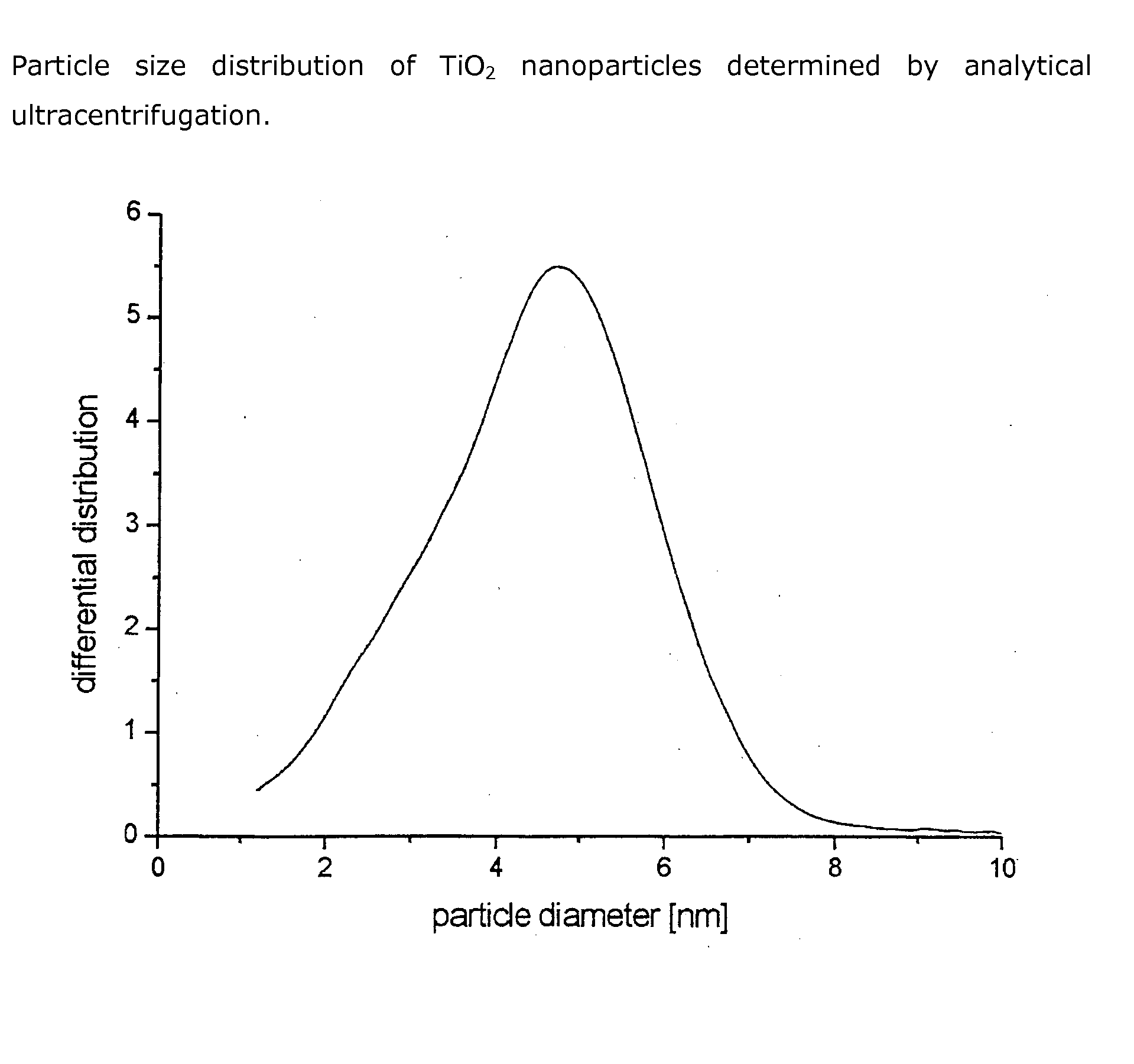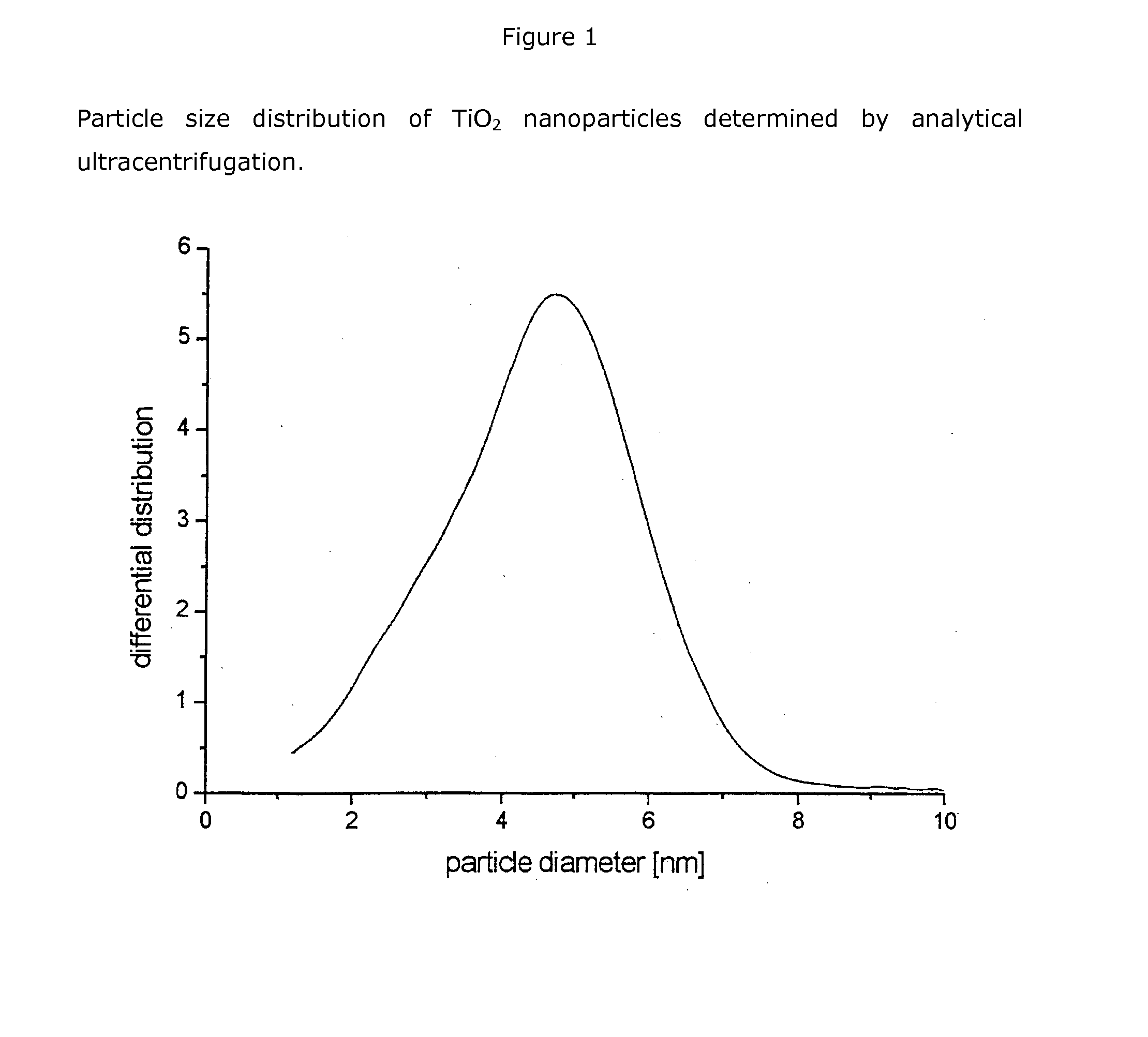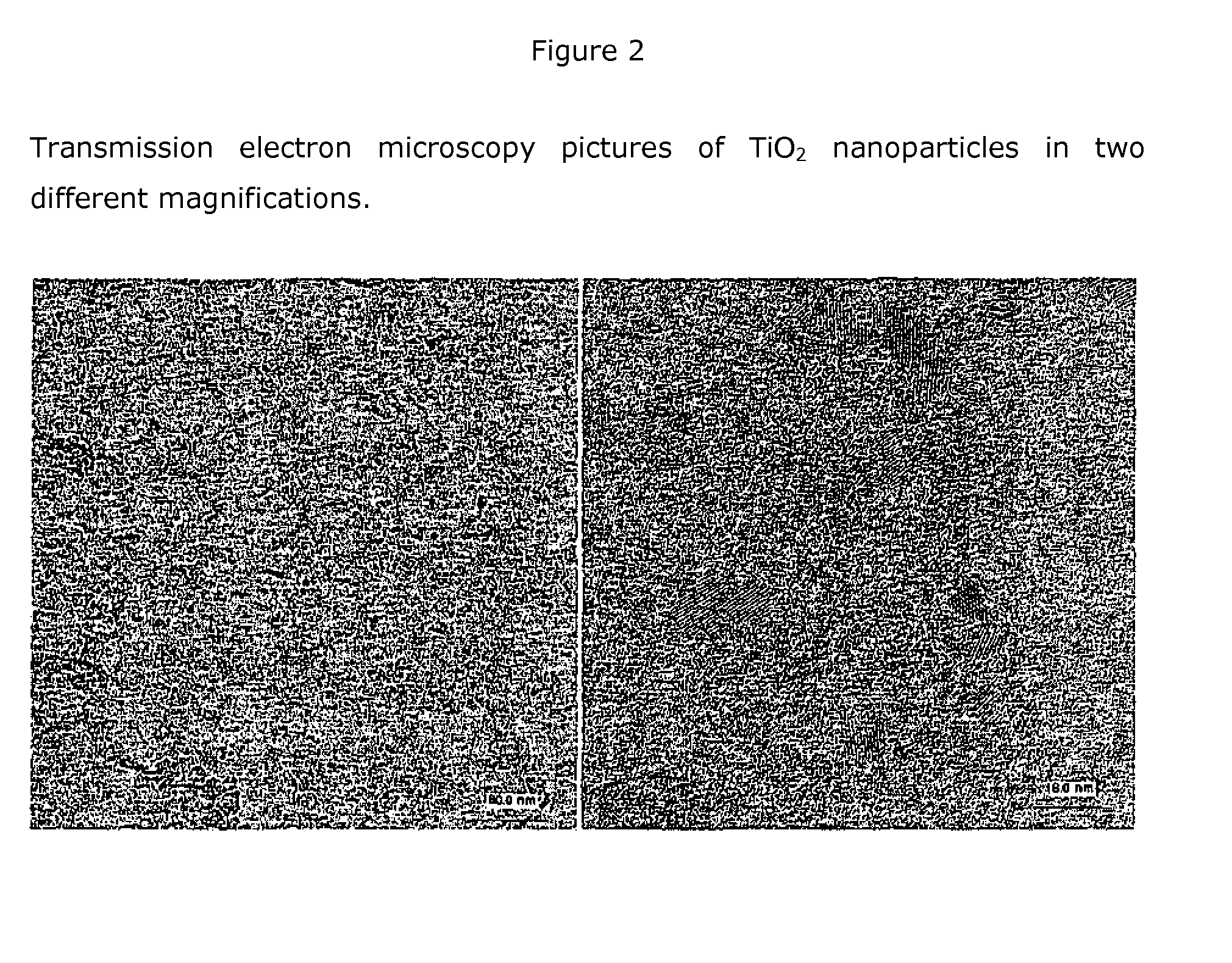Synthesis of Titanium Dioxide Nanoparticles
a technology of titanium dioxide and nanoparticles, which is applied in the field of synthesis of titanium dioxide nanoparticles and titanium dioxide nanoparticles, can solve the problems of insufficient dispersibility of vapor phase nanoscale titanium dioxide tends to agglomerate, and is not readily dispersed in water and organic solvents
- Summary
- Abstract
- Description
- Claims
- Application Information
AI Technical Summary
Benefits of technology
Problems solved by technology
Method used
Image
Examples
example 1
[0056]Under vigorous stirring (magnetic stir bar) 600 ml diethylene glycol (Merck; pro synthesis) were charged into a 11-three neck flask having a reflux condenser with vacuum top, temperature probe and stopper, degassed over one hour at 60° C. (heating mantle) and 4 mbar and dried. Depending on the quality of diethylene glycol used, this step can also be renounced. Thereafter, the water content is determined by Karl-Fischer titration (typical values are in the order of 0.03%). Then 20 ml titanium tetrachloride (0.182 mol; Merck; content >99%) and 10 ml distilled water (0.556 mol) are added under nitrogen. The reaction temperature is increased to 160° C. and the reaction mixture is heated 4 hours under reflux.
[0057]Two 200 ml volumina of the reaction mixture are each cooled down to room temperature, filled into a centrifuge vessel (V=750 ml), filled up to 600 ml with acetone and centrifuged over 20 min at 4350 rpm. The clear supernatant solution is discarded and the centrifuge vesse...
PUM
| Property | Measurement | Unit |
|---|---|---|
| particle size | aaaaa | aaaaa |
| average primary particle size | aaaaa | aaaaa |
| molar ratio | aaaaa | aaaaa |
Abstract
Description
Claims
Application Information
 Login to View More
Login to View More - R&D
- Intellectual Property
- Life Sciences
- Materials
- Tech Scout
- Unparalleled Data Quality
- Higher Quality Content
- 60% Fewer Hallucinations
Browse by: Latest US Patents, China's latest patents, Technical Efficacy Thesaurus, Application Domain, Technology Topic, Popular Technical Reports.
© 2025 PatSnap. All rights reserved.Legal|Privacy policy|Modern Slavery Act Transparency Statement|Sitemap|About US| Contact US: help@patsnap.com



